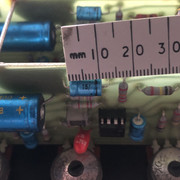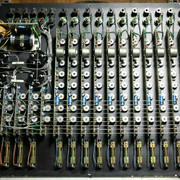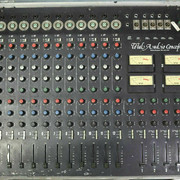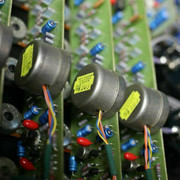analogguru said:
A tatalum normally ONLY fails due to overvoltage (and then they short) what means that if you have a 15V power supply and only 16V tantalums they can fail.
Tantalums are known to fail when reverse voltage is applied to them. In a well designed product it shouldn't happen, but actually it can happen, particularly at turn-off.
Replacing tants with Al types is said to change the sound, however I have no proof that the tant sound is better than the Al sound.
Anyway a well-dimensioned AL electrolytic should have no sound at all, if the circuit is decent.
The paper by Ciryl Bateman shows that, in order to get readable measurements, he had to subject the capacitors to such a current that creates a 3V rms voltage across it. This is far from being a practical case.
Typically, designers choose for coupling caps a value that is 10 times what's necessary for -3dB at the lowest frequency of operation. This results in the worst-case voltage across the cap 1/10th the output voltage.
In order to produce 3V across the capacitor, the output voltage must be 30Vrms.
A practical example would be a 130uF cap loaded with 600r. 30Vrms results in 1.5W.
I'm not saying it's impossible, but one who designs such a beast must be aware of the consequences and choose the value of the cap accordingly.
We are not anymore in a 600r world, so let's take a more current example.
With 100uF and a double load of 10k, the LF-3 dB point is at 0.3Hz. At 20Hz, the voltage across the cap is 1.5% the output voltage. In order to get 3 Vrms there, the output level would be 200V!
And the distortion levels measured by Bateman were all in the 0.002% region worst case.
He noticed that the distortion percentage varied more or less linearly with level.
That means that our hypothetical circuit of 100uF/5k, would produce 0.0001 THD at 10Vrms output.
I am in awe of people who can discern such low levels of distortion.
Particularly considering the quasi-total absence of energy at 20 Hz in most programs.





































![Electronics Soldering Iron Kit, [Upgraded] Soldering Iron 110V 90W LCD Digital Portable Soldering Kit 180-480℃(356-896℉), Welding Tool with ON/OFF Switch, Auto-sleep, Thermostatic Design](https://m.media-amazon.com/images/I/41gRDnlyfJS._SL500_.jpg)